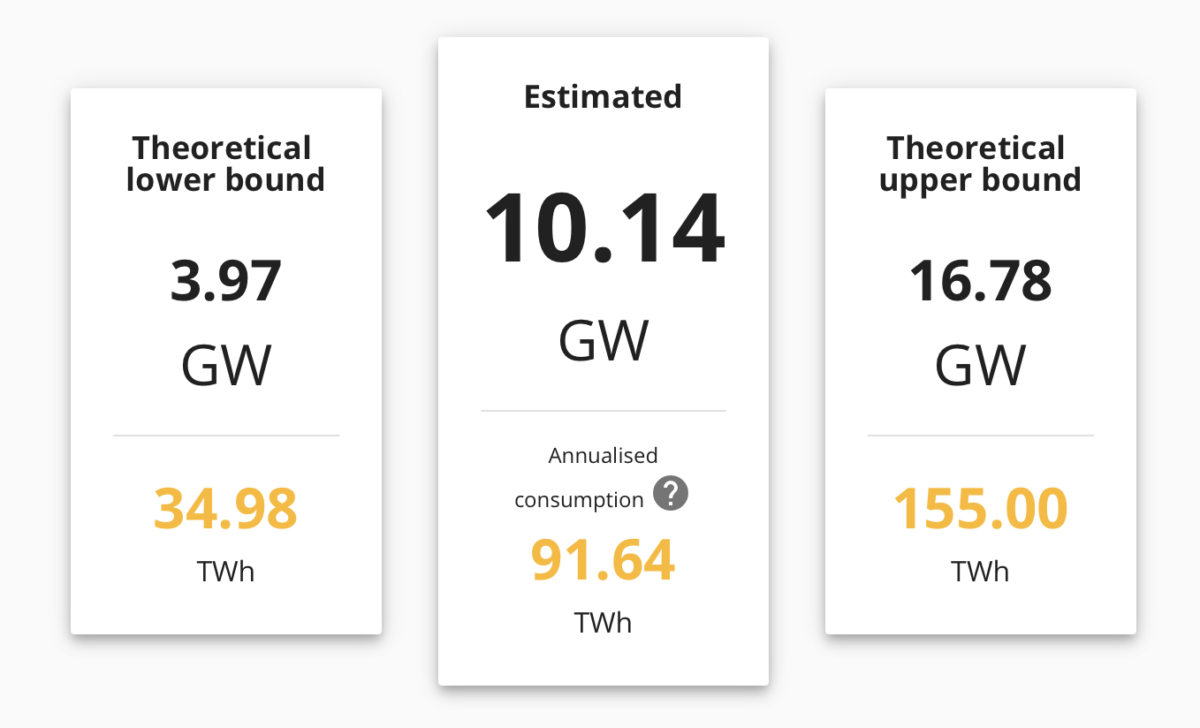Some really nice work on the energy consumption of Bitcoin from the Cambridge Centre for Alternative Finance at Cambridge University.
The current estimate is 10GW, with a lower bound of 3.94GW, and upper bound of 16.78GW. That’s 5 orders of magnitude higher than Cardano.
If we assume approximately 50W per pool (reasonable for an efficient modern hardware stack), times 500 pools = 25000W = 25KW total consumption. We could assume a lower bound of 10KW and upper bound of 50KW which would take into account that the pool number will increase to a 1000 in March 2021.
Worth taking a look at the Cambridge model, one of the more robust.
Theres also a very nice mining map showing the hash rate distribution globally. As mentioned previously on this blog there is a significant representation in China.

They break down the data for China by provinces, Xinjiang provides 35%.
For the record the ADAvault stack runs under 100W. It’s based on the latest generation Intel hardware, EVO970+ M2 SSD drives, the firewalls are using ARM chipsets and custom ASICs, and even with 2 clusters (active and passive, 3 nodes/cluster) the average power load is around 50W (peaking at points such as Epoch boundaries). ADAvault runs completely on a renewable green energy tariff.

